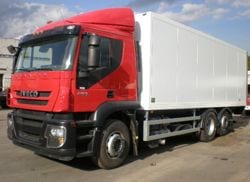
Test drive New Hyundai Solaris vs VW Polo
Solaris has added in all components after the generation change. But if he's so good, why not give the sedan a bigger test? We took VW Polo for the premiere test drive
The formidable bestseller of the Russian market seemed to shrink and shrink fearfully against the wall of an underground parking lot. Next to the new Solaris, the old sedan is a white dwarf in comparison with the red giant, according to the "solar" terminology stated in the title. And it's not only about the size, but also about the design, the amount of chrome and equipment. And Hyundai was not afraid to immediately expose the suspension to the blow of the Pskov roads. The new Solaris turned out to be several orders of magnitude better than its predecessor, so we decided to immediately give it a serious test - compare it with the Volkswagen Polo.
Polo and Solaris have too much in common. Firstly, they are of the same age: the production of cars at Russian factories began in 2010, although the German sedan started a little earlier. Secondly, the manufacturers stated that the cars were created specifically for the Russian market and for difficult road conditions. Thirdly, instead of the total economy of "Logan", Polo and Solaris offered an attractive design, options not typical for the budget segment and more powerful motors.
The radiator grille with horizontal slats and the lights splashed over the fenders and the boot lid evoke associations with the Audi A3 sedan, the black bracket on the rear bumper is almost like a BMW with an M-package. The top version of Hyundai Solaris shines with chrome: fog lamp frames, window sill line, door handles. Is this a humble B-class representative? Only a massive trunk has been retained from its predecessor Solaris. The rear overhang has grown and the rear fenders have become even more prominent. The silhouette has completely changed, and Hyundai, with good reason, compares the budget sedan not only with the new Elantra, but also with the premium Genesis.
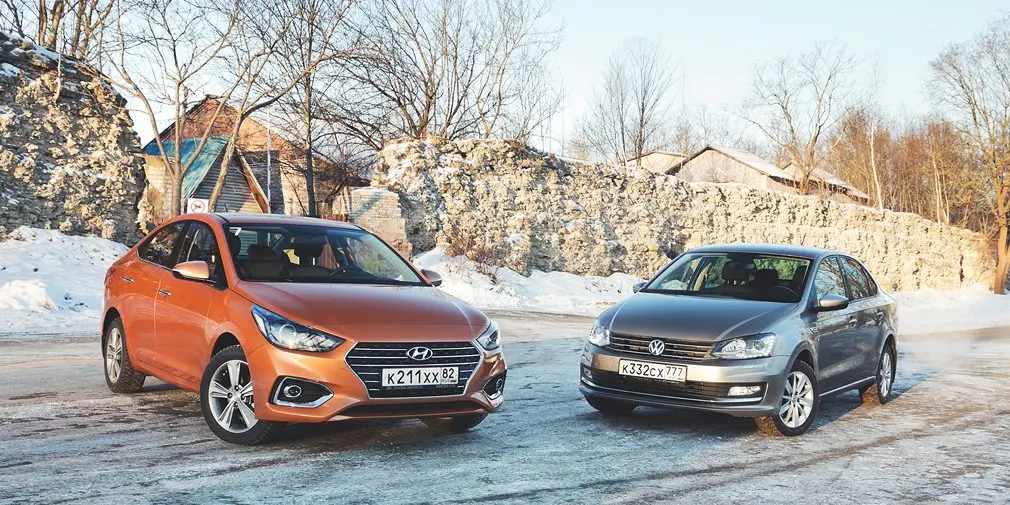
If the Solaris design may seem too avant-garde to someone, then Polo is at a different stylistic pole. It's like a classic two-button suit: it looks decent and you can't tell right away how much it costs. Even if simple classic lines do not catch the eye, they will not become outdated for a long time. If they become familiar, then it is enough to change the bumper with optics - and you can let the car go on. In 2015, the Polo got chrome parts and a "birdie" on the fender, as if spied on the Kia Rio.
Polo is the magic of Das Auto, a purebred "German", but as if born in East Germany, in a panel high-rise building of a sleeping area. The branded avaricious style is not able to disguise the blatant economy. This is especially noticeable in the interior: the rough texture of hard plastic, a simple dashboard, old-fashioned air ducts, as if it were a car from the 1990s. The neat fabric inserts on the doors give the impression of being soft until you bump into your elbow. The most expensive part is the narrow armrest between the front seats. It is really soft and even covered with velvet inside.
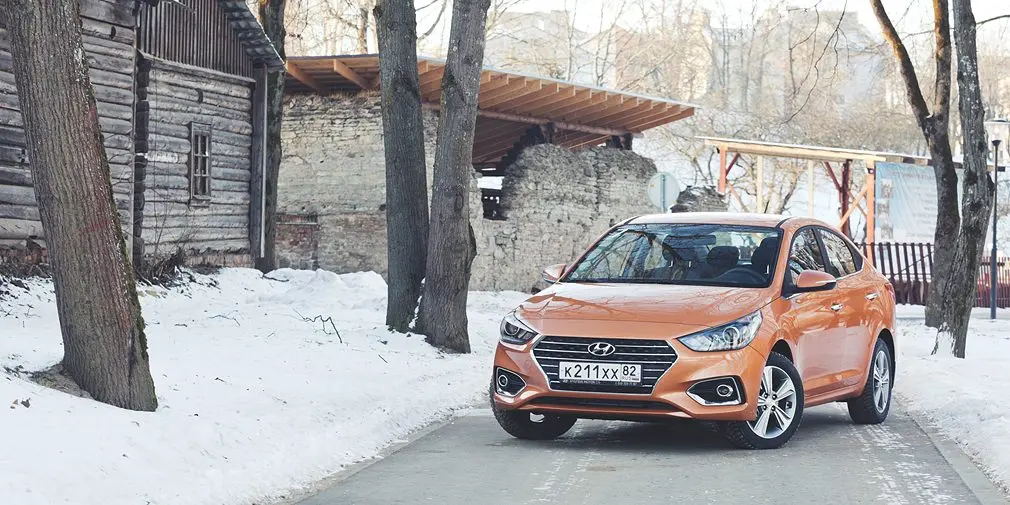
The cup holders under the center console only hold small bottles. The console itself is not very well configured: the multimedia screen and the climate control unit are located low and distract from the road. The knobs of the climate system are small and confused: you want to increase the temperature, but instead you change the blowing speed.
The front panel of the Solaris looks more expensive, although it is also made of hard plastic. The perception is influenced by the quirkiness of the details, the elaborate texture and, importantly, the neat assembly. Optitronic tidy with pointer indicators of coolant temperature and fuel level - as if from a car two classes higher. Now you can not be distracted by the steering column levers, because the modes of light and power windows are duplicated on the on-board computer screen. The avant-garde interior of Solaris is organized in a much more practical way. There is a spacious niche for smartphones under the center console, which also contains connectors and sockets. The screen of the multimedia system is placed high, between the central air ducts, and the climate control unit with large buttons and knobs is simple and straightforward to use. Heating buttons are logically grouped into a separate block, so you can find them without looking.
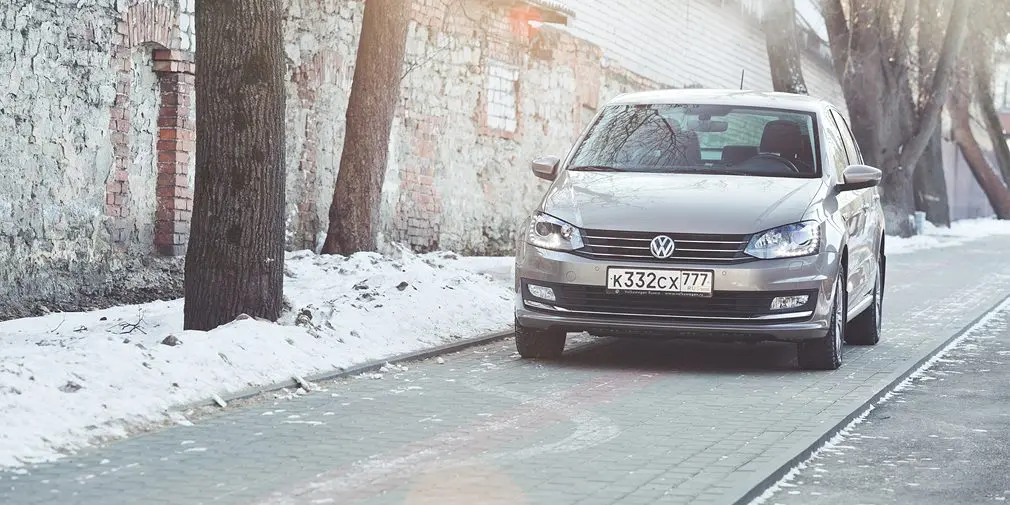
The driver's seats in both cars are firm and comfortable enough. There is a pillow height adjustment, but the lumbar support cannot be adjusted. The backward view is better in Solaris due to the larger mirrors and the diagonal of the display, which displays the picture from the rear-view camera. But in the dark, it is preferable to Polo with bi-xenon headlights - Solaris even in the most expensive configuration provides "halogen".
The test Polo had a simple multimedia system with a tiny screen, and a more advanced one with MirrorLink support is available for a surcharge. But even it is inferior to the one installed on Solaris: a large, high-quality and responsive display, TomTom navigation with detailed Here maps, theoretically capable of showing traffic congestion. Android Auto support allows you to use navigation and traffic from Google. In addition, there is support for Apple devices. The multimedia system is offered in the maximum configuration, but even a simple audio system is controlled using buttons on the steering wheel, equipped with Bluetooth and connectors for connecting smartphones.
Solaris hospitably opens the tailgate to a greater angle. Thanks to the increased distance between the axles, passengers in the second row are now not cramped. The Polo, despite its smaller wheelbase, still offers more legroom, but otherwise the Solaris caught up with the competitor, and in some ways even surpassed. Comparative measurements showed that it had a higher ceiling and more space in the back at the elbow level. At the same time, the tall passenger touches the back of his head to the falling roof of Hyundai, and the lining on the hinge of the folding back rests against the lower back of the person sitting in the middle. But the other two passengers have two-stage seat heating, a unique option in the segment. Polo can only offer a folding cup holder for second-row passengers. No car has a folding center armrest.
Solaris increased the gap from the competitor in terms of trunk volume: 480 versus 460 liters. The folding sections of the rear backrest have been reversed, and the opening to the salon has become wider. But the "German" in the underground has a capacious foam box. The loading height is lower at Volkswagen, but the Korean sedan is in the lead in the width of the opening. The Polo trunk in expensive trim levels opens with a button on the lid, as, indeed, the Solaris trunk. Plus, as an option, it can be opened remotely - just walk up to the car from behind with a key fob in your pocket.

At the time of its appearance, the "first" Solaris was equipped with the most powerful motor in the segment - 123 horsepower. For the new sedan, the Gamma series unit was modernized, in particular, a second phase shifter was added. The power remained the same, but the torque decreased - 150,7 versus 155 Newton meters. In addition, the motor reaches peak thrust at high revs. The dynamics have remained the same, but Solaris has become more environmentally friendly and more economical, especially in urban conditions. The version with "mechanics" consumes an average of 6 liters of fuel, the version with automatic transmission - 6,6 liters. The motor turned out to be more elastic than on its predecessor - a sedan with "mechanics" easily gets under way from second, and in sixth gear it travels at a speed of 40 km per hour.
The 1,4-liter Polo turbo engine is slightly more powerful - 125 hp, but noticeably more powerful: peak 200 Nm are available from 1400 rpm. The robotic gearbox with two clutches works much faster than the classic "automatic" Solaris, especially in sport mode. All this provides the heavier German sedan with better acceleration dynamics - 9,0 s to 100 km / h versus 11,2 s for Hyundai.
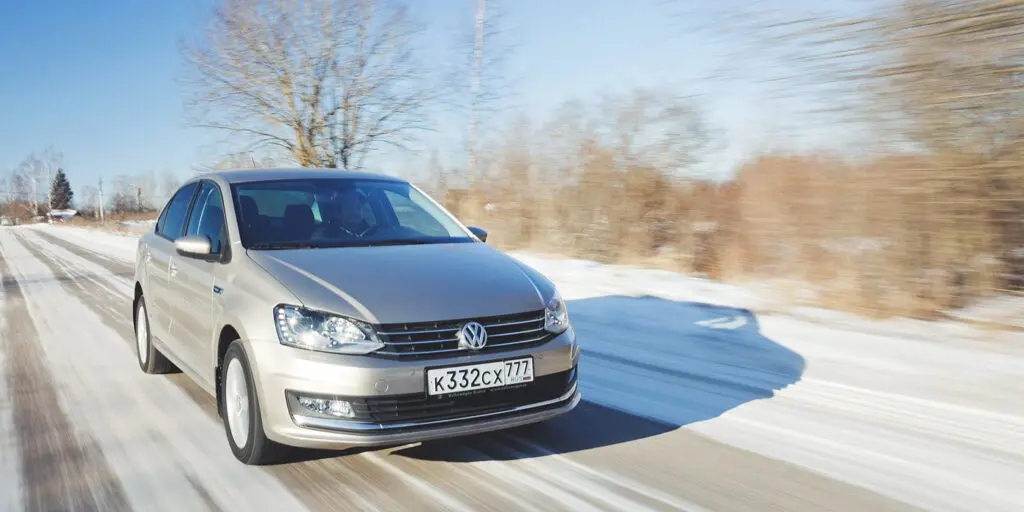
Polo is more economical - on average, it consumed a little more than seven liters per 100 km, and Solaris in the same conditions - a liter more. The usual "aspirated" 1,6 liter, which is also installed on the Polo, does not have such advantages in dynamics and consumption, although for a budget sedan it seems more preferable and is equipped with a classic "automatic". Robotic boxes and turbo motors are more complex, so many buyers are wary of them.
Both sedans have undergone special training for extreme Russian conditions: increased ground clearance, plastic wheel arch liners, protective linings for the lower part of the arches, anti-gravel protection, towing eyes at the rear. On the bottom of the doors, the Polo has an additional seal that closes the sills from dirt. In cars, not only the windshield is heated, but also the washer nozzles. So far only Solaris has a heated steering wheel.
The old Solaris has gone through several rear suspension upgrades: from being too soft and prone to swinging, it turned into a stiff one as a result. The chassis of the second generation sedan is new: in front, upgraded McPherson struts, in the rear, a more powerful semi-independent beam, as on the Elantra sedan and Creta crossover, with shock absorbers placed almost vertically. It was initially set up for broken Russian roads. The first prototypes (it was the Chinese version of the sedan under the name Verna) began to run in two years ago. The future Solaris in camouflage drove along the mountain roads of Sochi and along the grader leading to the semi-abandoned Teriberka on the shores of the Barents Sea.
The roads of the Pskov region are excellent for checking the work done - waves, ruts, cracks, holes of various sizes. Where a pre-styled first-generation sedan would have rocked passengers for a long time, and a restyled one would shake optimism out of them, the new Solaris rides quite comfortably and does not pay attention to single large pits. But the ride is very noisy - you can clearly hear the sound of each pebble on the arch, and how the thorns bite into the ice. The tires hum so loudly that they drown out the wind whistling in the mirrors that appears after 120 km per hour. At idle, the Solaris engine is not audible at all, even the smaller Polo turbocharger works louder. At the same time, the German sedan is better soundproofed - its tires do not make so much noise. The disadvantage of the new Solaris can be solved by visiting a dealer or a specialized soundproofing service. But the driving character is not that easy to change.
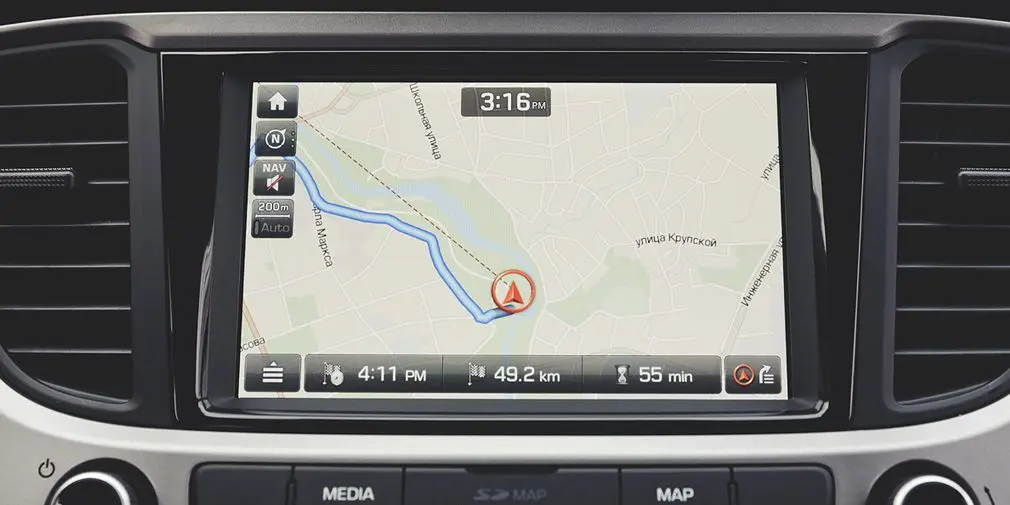
When developing the new Solaris, Hyundai engineers chose the Polo as a model for handling. There is what is called breed in the behavior of the German sedan - in the effort on the steering wheel, in the way it keeps a straight line at high speed. He resiliently works out broken sections, but in front of "speed bumps" and deep holes it is better to slow down, otherwise a hard and loud blow will follow. In addition, the Polo's steering wheel is still too heavy when maneuvering in a parking lot.
Solaris is omnivorous, so it is not afraid of speed bumps. In dug areas, the tremors are more noticeable, in addition, the course of the car must be corrected. The steering wheel with the new electric power steering turns easily at all speeds, but at the same time provides a distinct feedback. First of all, this concerns the version with 16-inch wheels - the sedan with 15-inch discs has a more blurred "zero". The stabilization system for the Korean sedan is now available in the "base", while for the VW Polo it is offered only with a top turbo engine and a robotic gearbox.
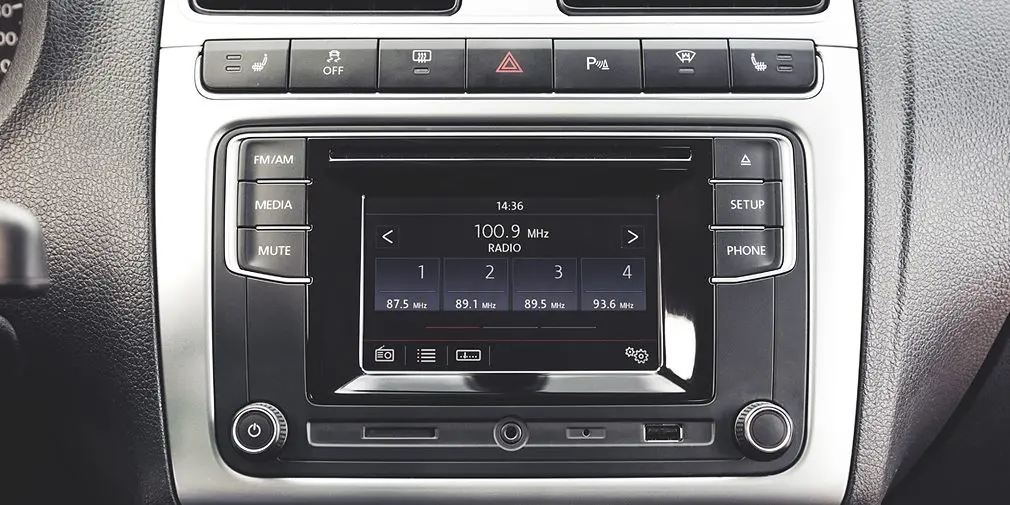
Once Polo and Solaris competed with basic price tags, and now with a set of options. The basic equipment of the new Solaris is impressive, especially in terms of safety - in addition to the stabilization system, there is already an ERA-GLONASS and a tire pressure monitoring system. The most popular Comfort trim level adds an optitronic instrument panel, a leather-trimmed steering wheel and an outreach adjustment. The top version of Elegance has navigation and a light sensor. Volkswagen has already responded with a new Polo package called Life - essentially a modified Trendline with additional options such as heated seats and washer nozzles, a leather-wrapped steering wheel and gear lever.
So which one to choose: xenon light or electric heat? Restyled Polo or new Solaris? The Korean sedan has grown and in driving performance has come close to the German competitor. But Hyundai keeps the prices a secret - the launch of mass production of the new Solaris will begin only on February 15th. There is no doubt that a bigger and better equipped car will get more expensive and possibly more expensive than the Polo. But Hyundai has already promised that the sedan can be bought on credit at favorable rates.

| Hyundai Solaris 1,6 | Volkswagen Polo 1,4 | ||
| Body type | Sedan | Sedan | |
| Dimensions: length / width / height, mm | 4405 / 1729 / 1469 | 4390 / 1699 / 1467 | |
| Wheelbase, mm | 2600 | 2553 | |
| Ground clearance, mm | 160 | 163 | |
| Cargo space, l | 480 | 460 | |
| Curb weight, kg | 1198 | 1259 | |
| Gross vehicle weight, kg | 1610 | 1749 | |
| engine's type | Gasoline atmospheric | Turbocharged petrol | |
| Working volume, cubic meters cm. | 1591 | 1395 | |
| Max. power, h.p. (at rpm) | 123 / 6300 | 125 / 5000-6000 | |
| Max. cool. moment, Nm (at rpm) | 150,7 / 4850 | 200 / 1400-4000 | |
| Drive type, transmission | Front, AKP6 | Front, RCP7 | |
| Max. speed km / h | 192 | 198 | |
| Acceleration from 0 to 100 km / h, s | 11,2 | 9 | |
| Fuel consumption, l / 100 km | 6,6 | 5,7 | |
| Price from, $. | Not announced | 11 329 |
